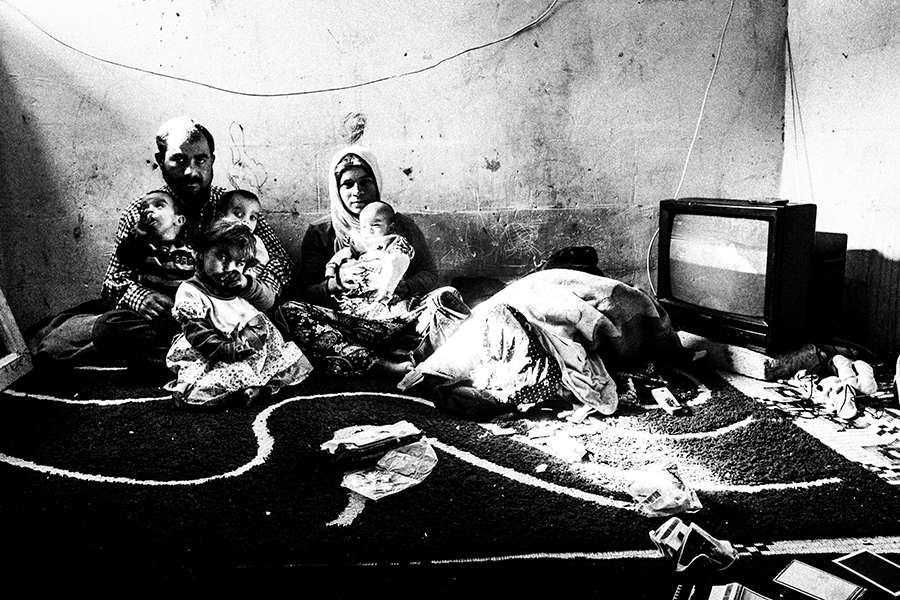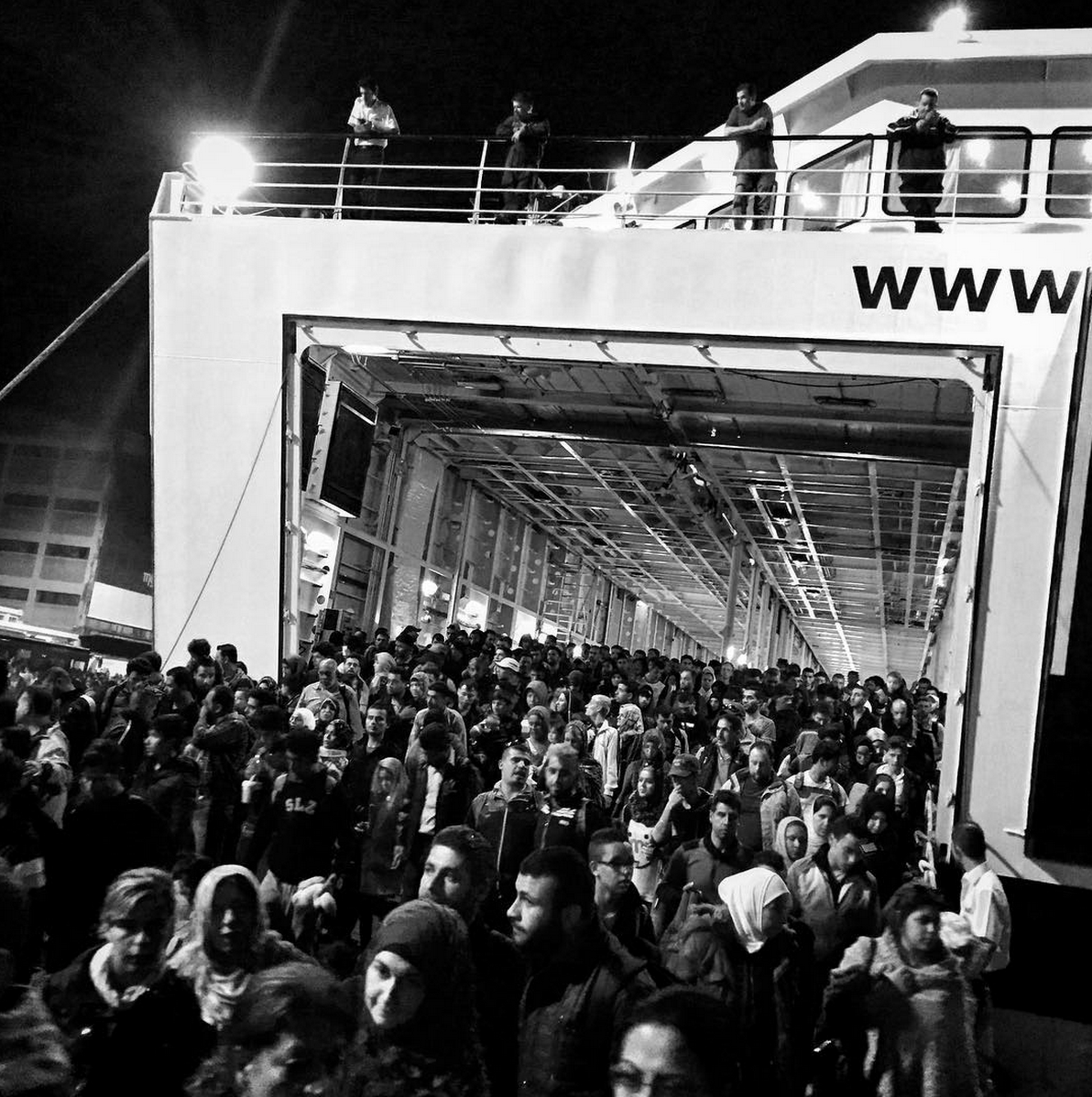Why The Documentation of The Refugee Crisis is Even More Important Today
Did you know that one in 69 people on our planet have been displaced in 2024? If you look at the total, that is about 120 million, or 1.5% of the world’s population, that is forced to flee their homes. These are the statistics shared by the Office of the United Nations High Commissioner for Refugees (UNHCR) a few months ago, and per the reports, the numbers have tripled when compared to the past decade. With the fresh onset of violence and persecution of Sudanese, Palestinians, Rohingya, Afghans, Syrians, and Ukrainians, it seems impossible for the number to reduce any time soon. In the face of such tragedies, the role of a photographer has become even more vital than before. Let us explain how.
Chroniclers of Injustices
To give you a better understanding of the mammoth figures, the refugee population was 2.1 million after World War II. However, that was simply the beginning of the crisis. From there on, various issues, such as the power-hungry American government and civil wars in their own country, led the numbers to surpass 30 million by the end of 2021. This included the Syrian refugees fleeing their homes in the 2010s, the Rohingya exodus in 2017, the South Sudanese Civilian War, and the Venezuela economic crises. In 2023, with Ukraine invading Russia, about six million Ukrainians have been displaced. Similarly, between October and December 2023, up to 1.7 million Palestinians, over 75% of the population, have been displaced within the Gaza Strip. Some were forced to flee on various occasions.
In the face of such atrocities, art is no longer limited to personal expressions of our day-to-day lies alone. It is supposed to grow and amplify the human experiences, especially of those who are vulnerable and don’t have the means to disseminate their cause. In that regard, photography and photography are different. As documentary and news photographers, their aim should be to highlight the morbid conditions their fellow humans have been forced to face for their race, caste, religion, gender, nationality, and social and political opinions. The recent horrors against Sudanese, Rohingya, and Palestinians are an example of how harrowing stories of their persecution must be reported repeatedly until we come across a solution for them. It is quite heartbreaking to see millions at the mercy of the soldiers navigating the drones or controlling the guns. It is even more enraging to see that many of us have collectively failed refugees, many of whom are children whose dreams and aspirations have been crushed. This is why stories of refugees must be pushed to the forefront to wake people up from their consciousness.
Photographers Who Have Portrayed Refugee Crisis
Jack Connor - L.A. Review of Books
Change can only be achieved through dialogue about the refugee crisis. The minute that conversation stops, our goldfish brains will continue to live blissfully in ignorance. Many purportedly refuse to talk about the refugee crisis, and for this reason, photographers need to share narratives of oppression as much as they can. For instance, photographer Esa Ylijaasko’s series, A Paradise Full of Song, is a poetic approach to the black-and-white images of Syrian refugees. In his images, the grainy, slow shutter images highlight the plight of those living in Istanbul and how they continue to live day-to-day despite the challenges.
The image above is a great example of Ylijaasko’s empathy and exceptional artistic side. The image portrays how the refugee parents have their guard on while the children have no idea what is happening around them. The parents look straight into the camera, highlighting how they don’t know what is expected from them. The light on the rug burns out some details, but the shadowed area showcases the crumpled paper on the floor. The TV on the right is the only source of entertainment in the room, but the black and white lines prove that the signal may have been cut off. The scribbling on the walls also depicts that the children often turn to drawing to pass the time. The heaps of clothes in the middle and the thick rug could indicate that group six perhaps shares that one room.

The photograph wouldn’t have worked if it was shot at night, as it was made with a film camera. In fact, the light in the middle gives the child and the mother an otherworldly glow, which favors the photographer. The reportage-like image also keeps the photography aesthetics in mind, with the grain adding a layer of emotion to the whole scene. The image looks the most compelling in black and white, and perhaps, with the colors, the forms would have muted more.
A slightly different approach is by Mujtaba Jalali, an Afghan refugee who traveled to Germany from Iran to understand “why humans are abandoning their homeland.” In Jalai’s images, the lack of color highlights the pain of the people, many of whom continue to move from country to country in hopes of finding a better livelihood and future for themselves. In his interview with us, Jalai noted the biggest challenge for him was the “paradoxical treatment of humans to humanity.” He adds: “Thousands of refugees, including mothers and kids, sleep in the freezing mountains near the borders at night while their kids cry. They pass the sea with a plastic boat while death embraces them wholly.”

The image here epitomizes what it means to be a refugee. Hoards of people have boarded the ship for a better future; however, many took this risk, knowing they may not live. While their faces are not entirely visible, it still gives you a sense of anxiousness and fear of what lies ahead. The tilted angle adds to the layer of tension as if Jalali realized to take the image at the very end moment. The layers are further expanded if you look at the four men above, waiting patiently for the refugees to leave. The three W’s at the back are reminiscent of how we used to write WWII in abbreviations. Overall, the image depicts the painful journey of the refugees, with the ship being one of the initial troubles in their lives. In a way, the photograph reminds us of how often we forget about the sufferings of others when our needs have been met.

Last but not least is Michael Cohen’s work, which includes compelling portraits of Syrian refugees who have successfully settled in Germany. The series, called Open Doors, Open Mind, is an exceptional project that depicts refugees in a positive light. “What hit me was that the images we had been bombarded with by photojournalists portrayed Syrian refugees in such a way that made them hard to know and not necessarily the people you want in your neighborhood. Sure, you were sympathetic, but you didn’t want them in your town,” Cohen told us in an interview. Thus, he began the series by photographing and interviewing the refugees “and presenting them as a traveling exhibit to show US audiences what happens when refugees are allowed into an environment where they can thrive.”

The portrait above is an excellent example of how to photograph a community without romanticizing them. As Cohen mentioned, the depiction of Syrian refugees has often been of them fleeing the war, with zero coverage about their lives outside of their native countries. In this project, Cohen successfully dismantles stereotypes that have been built with the Western coverage of Muslims. Yes, Syrians are fighting a complicated war, but those who flee can use their experience to build their adopted home in myriad ways. For instance, in the portrait above, the lady’s smile reaches her eyes, showcasing that she is truly happy wherever she is. The light reflection caught in her eye almost makes her eyes twinkle, with the scarf around her neck portraying it as a part of her identity. Since the Taliban’s rise, the West has seen Muslims with prejudice as savages and conservatives, with the woman above standing as the breaker of such preconceived notions. The woman also exudes confidence, that she is happy in her own skin and that there is nothing in the world she can’t achieve if she sets her eyes on it. As Cohen aptly said: “The motivation is that one person, with an idea, and a will and a lot of hard work, can turn a camera into a change agent.”
We hope that this article has made you understand the importance of documenting the stories of refugees. They are a part of our society, even if they are strangers, you have never met. The fact that they are living beings in immense pain is a good enough reason for anyone to rise to their feet and demand their safety and right to live in a peaceful and thriving environment.

Superb customer service, top-notch.
I’m often to blogging and i really appreciate your content. The article has actually peaks my interest. I’m going to bookmark your web site and maintain checking for brand spanking new information.
Great information shared.. really enjoyed reading this post thank you author for sharing this post .. appreciated
For the reason that the admin of this site is working, no uncertainty very quickly it will be renowned, due to its quality contents.